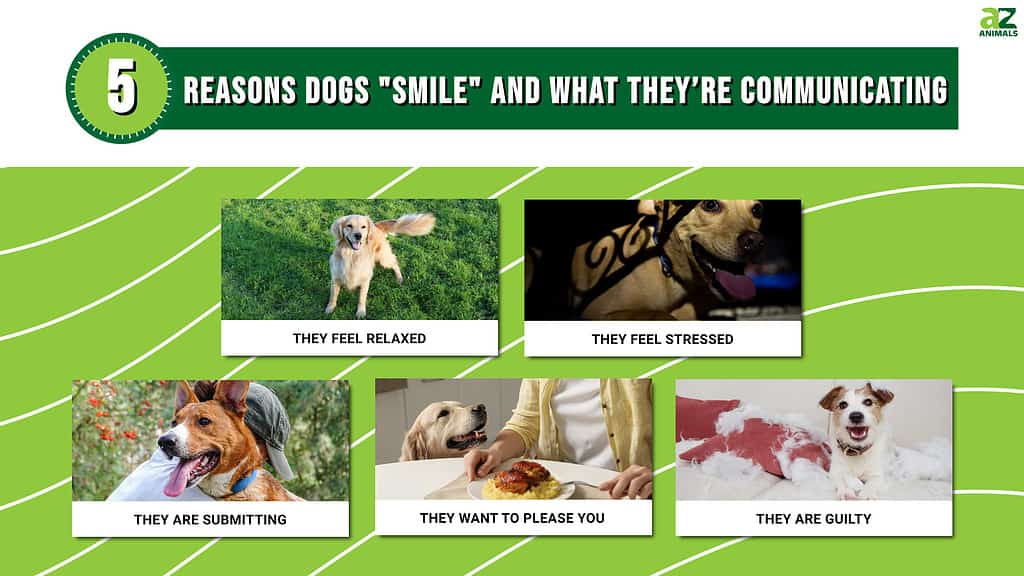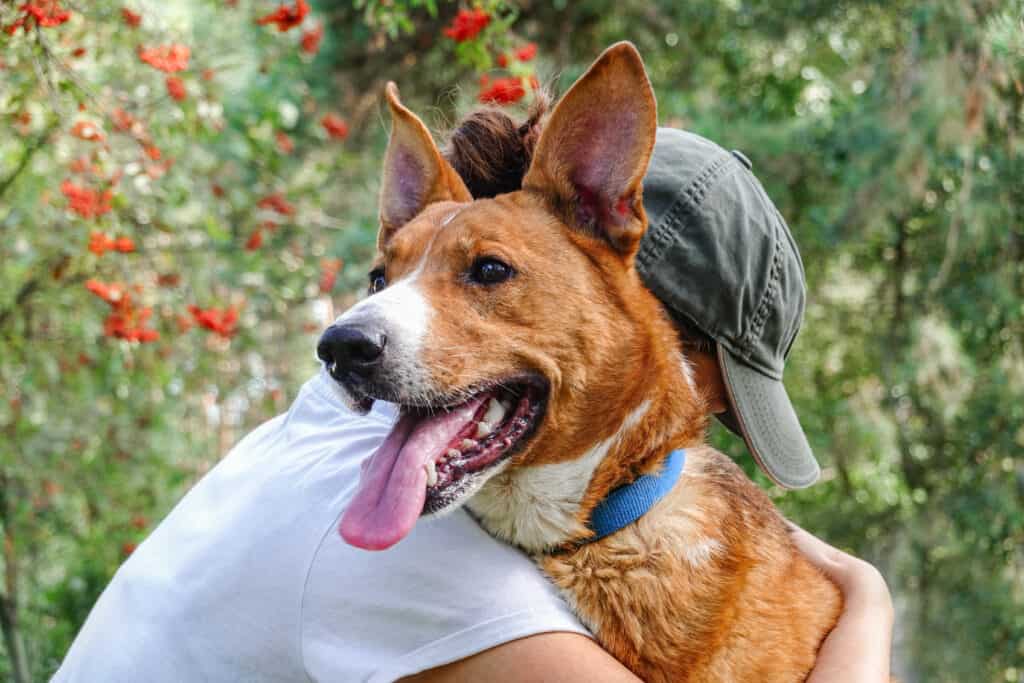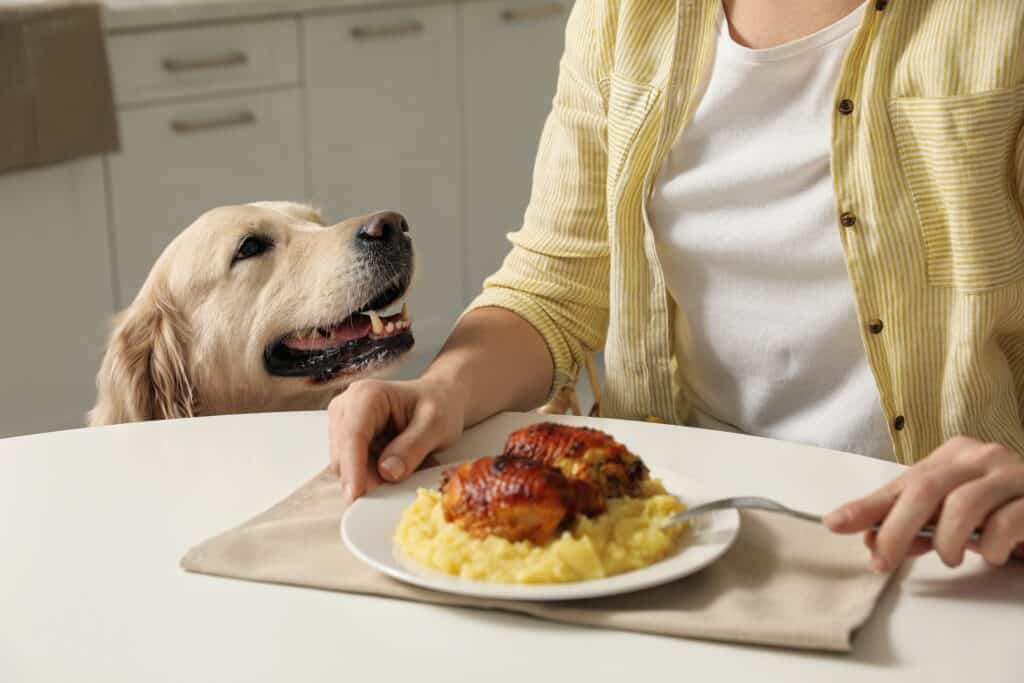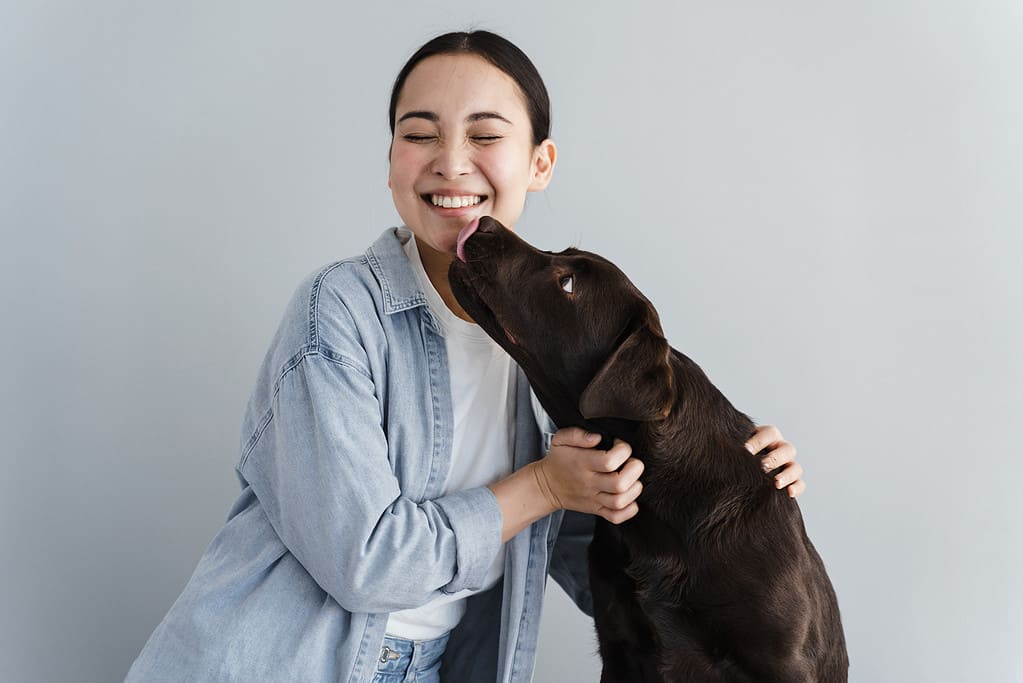It’s one of the most heart-warming moments a dog owner can experience – you’re your dog smiles at you. Yet, the dog smile is a hotly debated subject. Some owners are convinced that their four-legged friend smiles back at them but others dismiss this as nonsense. They claim that dogs have different types of body language and do not communicate with smiles. So, why do dogs smile? What are they telling us and how should we interpret it? Here we set out the five reasons dogs smile and take an in-depth look at what they are trying to tell us.

Can Dogs Smile at All?
This depends on what you mean by a ‘smile’. If we feel that a smile is a particular facial expression associated with being pleased and happy, we can investigate if dogs truly smile. Let’s break this down into a couple of points.
Can Dogs Make the Shape of a Smile With Their Mouth?
Many dogs can make a facial expression that we humans describe as a smile. Their face will be relaxed, their mouth will be partially open and they may be panting. There will be no tension around the mouth and the corners may even be turned up a little.
The problem is that dogs can make this shape and bare their teeth when they are being aggressive. Their face may look like a smile but the emotions behind it are not friendly at all. This brings us onto the next point.
Can Dogs Feel Emotion?
Smiles are all about expressing emotion so if dogs don’t have emotion, it is impossible for them to smile. Up until a few decades ago, it was assumed that dogs did not have emotions. But recent studies using MRI technology have shown that dogs have parts in their brain that correspond to the parts of the human brain that control emotions and feelings. By looking at hormone levels in dogs’ blood, we also know that they experience increased levels of the feel-good hormone oxytocin when humans pet them. The same hormone makes humans feel happy.
So the answer is, yes, dogs can feel emotions!
Is It a Real Smile?
Most animal behavior experts argue that a dog’s grin is not a true smile because they don’t use this facial expression in the same way as humans do. On the other hand, dogs that ‘smile’ are usually in a happy state. So, if you want to relate that to a human smile, go ahead!
Why Do Dogs Smile?
It is important to realize that dog smiles are not always about happiness. Dog behavior experts have identified four reasons why dogs smile.
#1 They Feel Relaxed
When your dog gives you a relaxed smile, their eyes will appear soft and their lips will not be drawn back. Because their facial muscles are not tense, their ears will sit in their natural position and will not be pinned back.
At the same time, their body language will be casual and they will have a happy waggy tail. You often see this grin after a dog has had a fun play session and has burned off all their tension. Dogs with this smile feel safe, relaxed and comfortable.

A dog wagging his tail may exhibit a relaxed sort of smile as seen here.
©Hollysdogs/Shutterstock.com
#2 They Feel Stressed
Other smiles reveal more tension. Your dog’s ears will be pulled back against their head and the tension in their facial muscles will be obvious. There could be panting – which is stress-related. Their eyes will be wide open, showing the whites – this is often called whale-eyes. Also, their head will be pulled backwards into a tense position and their limbs will be tense and stiff.

A dog with this sort of expression is probably stressed or frightened.
©Patrick H/Shutterstock.com
#3 They Are Submitting
If your dog is mainly timid and submissive, they can make a facial expression that looks a bit like a grin. It is an appeasement gesture rather than a sign of happiness and it means that they feel uncomfortable. The muscles around their mouth are tense and their lips are drawn back to reveal their teeth. Their whole body is tense, their ears are flat.
Whilst this is not an aggressive snarl, it does indicate that the dog is feeling intimidated so be careful how you interact with them if you do not know them well. This grin is often seen in rescue dogs who are desperate to please the humans around them but are feeling nervous.

If a rescue dog smiles, it may be because it’s feeling intimidated and showing submission.
©Wpadington/Shutterstock.com
#4 They Want to Please You
Some experts think that dogs have spent so long analyzing human behavior that they know how to use a smile as a trick to get what they want. Dogs may retain some traits that they had as puppies because they learn that humans like them. This is why you find adult dogs jumping up, licking and giving big grins.
Every time we respond, we reinforce the behavior. We make a big fuss of our dogs when they ‘smile’ and perhaps even give them a treat. So, it is no surprise that they go on doing it. Some dogs can even be taught to smile on command.

Sometimes dogs “smile” because they know we enjoy it and may reward them for it.
©New Africa/Shutterstock.com
#5 They Are Guilty
A dog’s classic guilty face usually includes a grin – we’ve all seen it. It’s impossible to be cross with them, no matter what they have done. We like to think that our dog is feeling guilty and is sorry for doing something ‘naughty’. Unfortunately, neither of these are canine emotions. There is no evidence that dogs feel remorse or guilt.
What you are probably seeing is actually a submissive grin, which we have described above. Your dog will have noticed that you are not happy about something. They probably have no clue what that is! But, they have decided that they need to appease you anyway and use a submissive grin to defuse your aggression.

A dog smiling after doing something naughty probably has no idea what it’s done wrong but is trying to appease you.
©smrm1977/Shutterstock.com
This often happens when they have been destructive and broken something in your home. However, this is not their fault. It’s your responsibility to make sure that they have plenty to do, like a range of interactive toys. Also, if you know that your dog will get up to mischief when you are out, use a dog barrier to keep them in one place.
Warning About Dog Smiles
There’s nothing wrong in being enthusiastic about your dog’s smile and enjoying it as a way of bonding with your pooch. However, you need to make sure that you are not misinterpreting the dog’s emotions. This is particularly important when interacting with dogs that you do not know that well.
You may think that their grin is a sign that they are happy but in fact they are trying to indicate that they don’t like something and are feeling stressed. The worrying thing is that stress in dogs can very quickly escalate into aggression and biting. This is probably why so many dog biting incidents involve children under 7 years of age. They misinterpret dog smiles as an invitation to pet the dog when in fact it means ‘Keep away from me!’ What is even more confusing is that dog ‘smiles’ from stress are also accompanied by a wagging tail which humans assume means happiness. Sadly, it is not as simple as that. Dogs also wag their tails as a sign of aggression.
Do Dogs Understand Human Smiles?
Dogs constantly assess our body language to find out if they have pleased us or not. Most are very good at it. They will be able to tell if their human companions are happy or not and a smile is a part of that.
Whilst it is unlikely that they can interpret a smile on its own, they will get the general idea! There is no evidence that dogs interpret a human baring their teeth when they smile as a snarl. They can detect this in other dogs but understand that it means something different in humans.
Why Do Dogs Lick You?

Dogs lick humans to show their love.
©ISvyatkovsky/iStock via Getty Images
For dogs, licking is an instinctual behavior. Many reasons will cause them to lick in general, such as grooming themselves, soothing itchy or irritated skin, easing anxiety and nervousness, expressing themselves, and bonding with their human. When a dog decides to give a human a lick, it is likely a gesture of love, such as a kiss. They may also be trying to get your attention because they have a need or want. Sometimes, you just might be tasty! Whatever the case, a dog licking you is a positive action, and he is hoping for a pet in return, or possibly a treat.
Summary of 5 Reasons Dogs “Smile” and What They’re Communicating
| Reasons Dogs Smile | |
|---|---|
| 1 | They Feel Relaxed |
| 2 | They Feel Stressed |
| 3 | They Are Submitting |
| 4 | They Want to Please You |
| 5 | They Are Guilty |
The photo featured at the top of this post is © smrm1977/Shutterstock.com
Ready to discover the top 10 cutest dog breeds in the entire world?
How about the fastest dogs, the largest dogs and those that are -- quite frankly -- just the kindest dogs on the planet? Each day, AZ Animals sends out lists just like this to our thousands of email subscribers. And the best part? It's FREE. Join today by entering your email below.
Thank you for reading! Have some feedback for us? Contact the AZ Animals editorial team.






